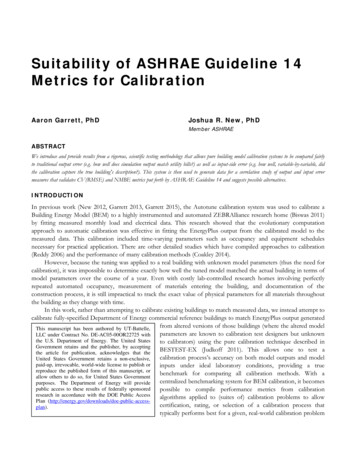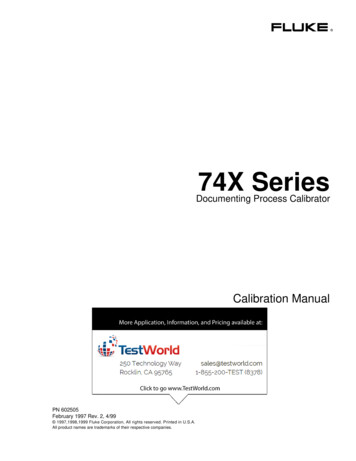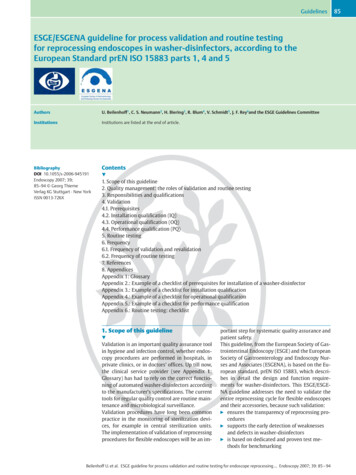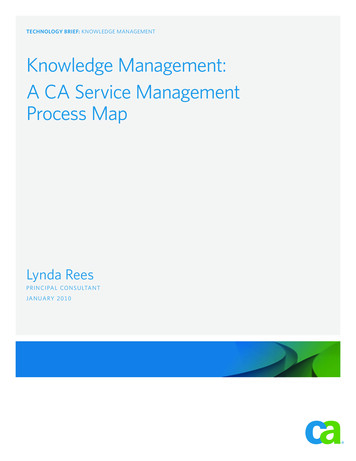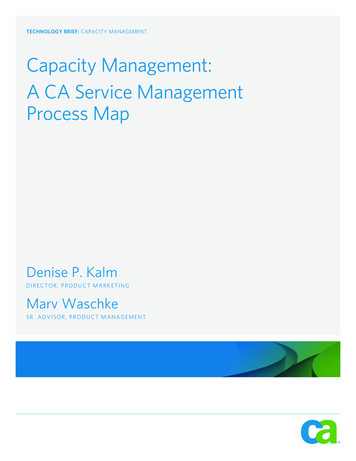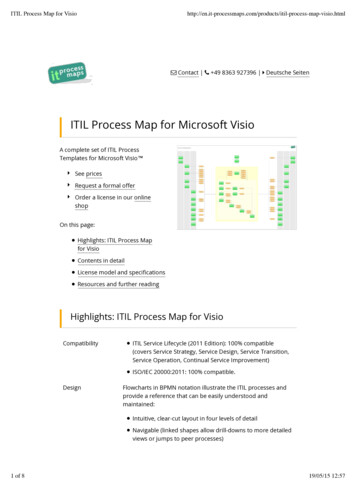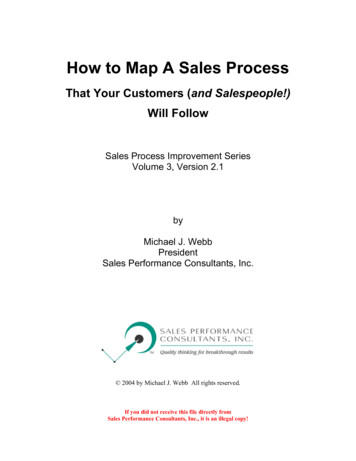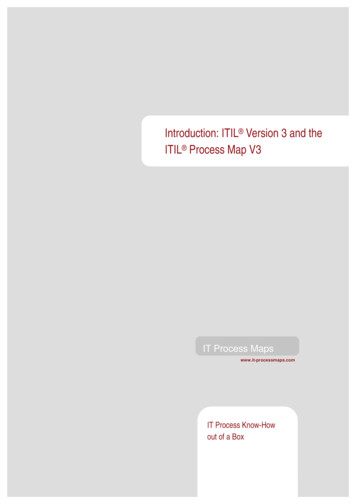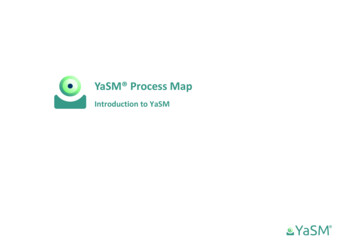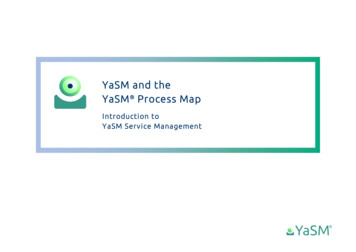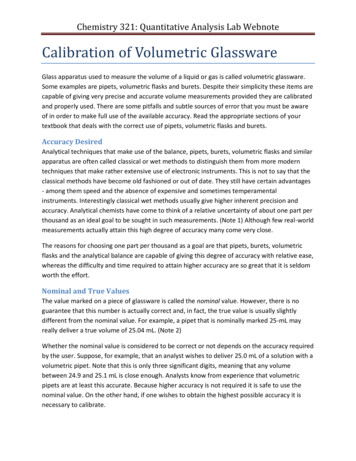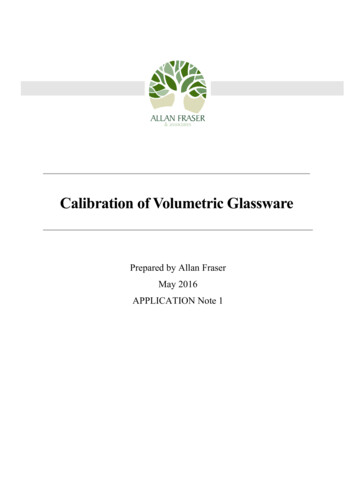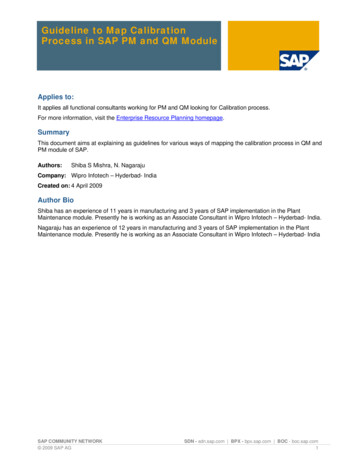
Transcription
Guideline to Map CalibrationProcess in SAP PM and QM ModuleApplies to:It applies all functional consultants working for PM and QM looking for Calibration process.For more information, visit the Enterprise Resource Planning homepage.SummaryThis document aims at explaining as guidelines for various ways of mapping the calibration process in QM andPM module of SAP.Authors:Shiba S Mishra, N. NagarajuCompany: Wipro Infotech – Hyderbad- IndiaCreated on: 4 April 2009Author BioShiba has an experience of 11 years in manufacturing and 3 years of SAP implementation in the PlantMaintenance module. Presently he is working as an Associate Consultant in Wipro Infotech – Hyderbad- India.Nagaraju has an experience of 12 years in manufacturing and 3 years of SAP implementation in the PlantMaintenance module. Presently he is working as an Associate Consultant in Wipro Infotech – Hyderbad- IndiaSAP COMMUNITY NETWORK 2009 SAP AGSDN - sdn.sap.com BPX - bpx.sap.com BOC - boc.sap.com1
Guideline to Map Calibration Process in SAP PM and QM ModuleTable of ContentsInstrument Calibration Process .3Design of Equipment .3Design of Inspection Point & Inspection Type .4Design of MICs. .6Design of Sampling Procedure:.10Design of Inspection Method .12Design of Task List .12Design of Maint. Plan and its Scheduling .12Design of Result Recording .13Design of Usage Decision .13Design of Defect Recording.18Design of Certificate (Inspection Report) Printing .19Related Content.22Disclaimer and Liability Notice.23SAP COMMUNITY NETWORK 2009 SAP AGSDN - sdn.sap.com BPX - bpx.sap.com BOC - boc.sap.com2
Guideline to Map Calibration Process in SAP PM and QM ModuleInstrument Calibration ProcessCalibration is a process through which an instrument is examined with respect to a reference and set to produceaccurate output.To map the calibration process correctly various points need to be taken care for all Configuration, master data.The same is explained below.Design of EquipmentAll instrument needs calibration are to be categorized separately though standard equipment category: Q ie.“Test and Measuring Equipment”. All Master calibrator instrument which are used to calibrate the instrument is tobe categorized with Equipment category P i.e., Production Resources and Tools. Though Master calibrators alsoneed calibration but in most cases, this is carried out externally i.e., from a statutory authority. Hence calibrationof the same can be mapped through external services of Plant Maintenance.Adopting the standard equipment categories in above process enable us to utilize the functionality of follow upaction triggered automatically for usage decision additionally (detailed out in Usage decision follow-up action –page no- 11)Master data uploading of all such equipment, we can use standard LSMW with IBIP structure with classification.SAP COMMUNITY NETWORK 2009 SAP AGSDN - sdn.sap.com BPX - bpx.sap.com BOC - boc.sap.com3
Guideline to Map Calibration Process in SAP PM and QM ModuleDesign of Inspection Point & Inspection TypeThough SAP has provided standard inspection point 300 for equipment and 310 for Functional location and 14 asinspection type, however, following points may put certain additional advantage while thinking about customizedinspection points. If Before calibration and after calibration steps are to be recorded and valuated separately grouped at“Before” and “After”, we can configure customized inspection point with Equipment as well as Before orAfter in Text Length 10 user field as below.SPRO Quality Management Quality Planning Inspection Planning General Define Identifier forInspection PointsSAP COMMUNITY NETWORK 2009 SAP AGSDN - sdn.sap.com BPX - bpx.sap.com BOC - boc.sap.com4
Guideline to Map Calibration Process in SAP PM and QM ModuleFurthermore, the function module can be created to restrict the F4 values of the additional User field inthe function module tab.We can do point valuation as well valuation at inspection lot level, the final UD screen will be as below.SAP COMMUNITY NETWORK 2009 SAP AGSDN - sdn.sap.com BPX - bpx.sap.com BOC - boc.sap.com5
Guideline to Map Calibration Process in SAP PM and QM Module During defect recording process, if a notification needs to be generated, we can assign customizedInspection type to Customized Notification type (further detailed in defect recording section). The screenshown below.SPRO Quality Management Quality Planning Quality Inspection Inspection Lot Creation Maintain Inspection TypesDesign of MICs.While deciding the Master inspection characteristics as master data design, following points may greatly influencethe process. Complete/Incomplete copy model: If lower limit, upper limit, target value, control indicators are fixed andneed not to be changed, we can go for complete copy model. If not, we need to use incomplete copymodel and define all above during task list assignment level. If Before and after calibration recording calibration and valuation process are not managed bycustomized inspection point level as explained above, then to categorize the MICs which are for Beforecalibration and which are for after calibration, we may prefix B and A respectively. For example : for MICwhich is for result recording of CYC 1 GAS TEMP AFTER 25% VALUE (A2 K1T14) i.e it is prefixed withA which categorizes this MIC will be used for “After Calibration”. In this case, the no of MICs are going tobe high.SAP COMMUNITY NETWORK 2009 SAP AGSDN - sdn.sap.com BPX - bpx.sap.com BOC - boc.sap.com6
Guideline to Map Calibration Process in SAP PM and QM Module If we are managing the customized inspection point level and number of MIC master data maintenance isto be minimized, we can use the same MIC. The Text which is to be reflected in the Inspection lot resultrecording and further lot processing transaction, we can change the text as per requirement in the Tasklist assignment level. However, Please note that MIC result history is captured in the system is based onthe MIC code. Entire master data control can be shifted from MIC to Task list assignment level as shownbelow. Calculated characteristics are used to calculate the error based on the following possibilities.1. Based on Formula as shown below. Here the formula used is : ((C050-C750)*100)/C750 whereC050: Arithmetic mean of measured values for char for 50 characteristics and C750 :Targetvalue of characteristic 50. However, if for all steps, we need to define the formula the number ofMIC is going to increase.SAP COMMUNITY NETWORK 2009 SAP AGSDN - sdn.sap.com BPX - bpx.sap.com BOC - boc.sap.com7
Guideline to Map Calibration Process in SAP PM and QM Module2. Formula maintenance in each master data will increase based on above possibility. However, ifthe similar formula for Error is to be used, we can use function module (example) in SPRO Quality Management Quality Inspection Results Recording Define Parameters for CalculatedCharacteristics select Define Parameters for Calculated Characteristic as below. Here we arecopying the standard function module “QEFC FORMULA CALC EXAMPLE” and making ourown logic. We can assign Y0 to each calculation instead of creating formula for each calculation.This function module is triggered when we do result recording and valuate and press closebutton and it processes all data available during result recoding and outputs E RESULT into thescreen. In this function module we have obtained maximum absolute error % for all errors of allMICs grouped as “Before” and “After”SAP COMMUNITY NETWORK 2009 SAP AGSDN - sdn.sap.com BPX - bpx.sap.com BOC - boc.sap.com8
Guideline to Map Calibration Process in SAP PM and QM ModuleIn addition to the above, if system should dynamically fetch certain constant into calculation tothe function module, we can specify the same into the classification of the equipment as shownbelow.Here we are dynamically picking the Calibration range from equipment classification for errorcalculation to function module and calculating the error calculation. This gives flexibility to user toassign all constants, parameter for calculation and maintaining them in classification withminimum function modules.Above possibilities of calculated characteristics need to be selected judiciously to suit the requirement.SAP COMMUNITY NETWORK 2009 SAP AGSDN - sdn.sap.com BPX - bpx.sap.com BOC - boc.sap.com9
Guideline to Map Calibration Process in SAP PM and QM ModuleDesign of Sampling Procedure:Sometimes, during result recording, we may have requirement to record more than one sample, then we can useno of sample to record more than one results and system will calculate the arithmetic mean of all results of allsample. The sampling procedure for above case can be created as below.Assignment of these sampling procedures will enable you to record multiple results in result recording screen asshown below.SAP COMMUNITY NETWORK 2009 SAP AGSDN - sdn.sap.com BPX - bpx.sap.com BOC - boc.sap.com10
Guideline to Map Calibration Process in SAP PM and QM ModuleFor this we have to maintain control indicator of MIC as below. Single result radio button will enable us to recordresults based on the number of sample defined in sampling procedure.SAP COMMUNITY NETWORK 2009 SAP AGSDN - sdn.sap.com BPX - bpx.sap.com BOC - boc.sap.com11
Guideline to Map Calibration Process in SAP PM and QM ModuleUnless above, if we only require to record only single result for a MIC we can create a sampling procedure withno of sample as 1 and assign this to MIC in task List.Design of Inspection MethodIf laid down methods of calibration need to be mapped into calibration process, then we can create those manyInspection Methods and assign them correspondingly to each MIC of a Task list or we can assign the Method inMIC master itself.Design of Task ListThree types of task lists are possible to use for calibration process. Mostly followed Task lists are Generalmaintenance task list which can be created for all instrument having same calibration procedure.In the task list we have assign the necessary inspection points (standard or customized) in header data. The tasklist will have one operation for calibration. Necessary MICs will be assigned this operation. Master calibrator andTools which are PRT equipments will be assigned to this operation. Moreover, if we are using strategy task list,Maintenance package(s) needs to be assigned to operation. Uploading of task list with operation, PRTsassignment, Maint. Package assignment can be managed though standard LSMW with IBIP structures, howeverMIC assignment to task list operation, is not available in standard LSMW, for this we can create our own BDC.Design of Maint. Plan and its SchedulingMostly calibration of instrument is done based on a single frequency, hence to make the Task list and Maint. Planmaster data simple, we should use single cycle plan. Maint. Plan sort filed will play an important role inbackground scheduling of Maint. Plan. While configuring order type we should not maintain “Releaseimmediately” flag. This will enable us to schedule all call objects which are generated from Maint. Plan schedulingto be in created mode so that user can release the same at his convenience.SAP COMMUNITY NETWORK 2009 SAP AGSDN - sdn.sap.com BPX - bpx.sap.com BOC - boc.sap.com12
Guideline to Map Calibration Process in SAP PM and QM ModuleDesign of Result RecordingBased on the above master data design, result recording transaction will take place.Design of Usage DecisionThree SAP standard Follow up actions can be triggered during UD as shown below.SPRO Quality Management Quality Inspection Inspection Lot Completion Define Follow-Up Actions1 QFOA QM CHAR TO PM E POINTSFollow-Up Action: Transfer of QM Charac.Results to PM Measuring Points2 QFOA OBJECT STATUS SETFollow-Up Action: Set EquipmentStatus/Change Cycle Modification Factor3 QFOA ORDER TECHNICAL COMPLETEFollow-Up Action: Technically Complete PMOrder1st follow-up action can be used to transfer QM inspection results to the equipment/functional locations in PM asmeasurement documents. Both quantitative inspection characteristics (measured values) and qualitativeinspection characteristics (characterist
Guideline to Map Calibration Process in SAP PM and QM Module Design of Inspection Point & Inspection Type Though SAP has provided standard inspection point 300 for equipment and 310 for Functional location and 14 as inspection type, however, following points may put certain additional advantage while thinking about customized inspection points.File Size: 348KBPage Count: 23
